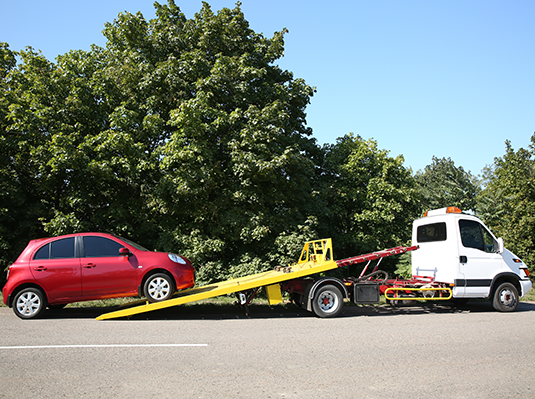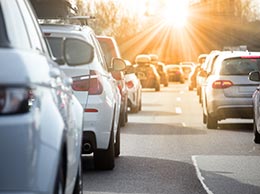
There is nothing more frustrating than getting in your car, turning the key, and hearing the telltale click of a dead battery. What are you supposed to do now? If your car won’t start or you are stuck on the side of the road with a flat tire, roadside assistance insurance can help solve your problem.
What does roadside assistance cover?
Roadside assistance typically covers a number of things, including:
- Towing: Roadside assistance will tow your car to the nearest mechanic (or a mechanic of your choice, depending on your plan) within a certain distance. Many roadside assistance companies will take you beyond their towing radius for an additional fee.
- Jumpstart: Roadside assistance will jumpstart your battery if it's dead or bring you a new battery if necessary.
- Changing a tire: Roadside assistance will usually replace your flat tire with your spare, but some vehicles that don’t come with a spare (such as motorcycles) may not be eligible.
- Lockout service: Roadside assistance can provide locksmith services in case you are locked out of your vehicle.
- Gas delivery: Roadside assistance will deliver enough fuel to get you to the nearest gas station, usually up to three gallons. While the fuel delivery service is covered under your roadside assistance plan, the cost of the fuel may not be, so you might be charged for the gasoline, depending on your plan details.
- Winching: Extrication or winching is necessary when your vehicle is stuck. Depending on the situation and how many people were required to extricate your car, you may have to pay an additional fee.
What do I do if I get a flat? Will roadside assistance bring me a tire?
If you have a roadside assistance program, either through your insurance policy or through a third party company, they will likely help you put your spare tire on your car. But what do you do if you don’t have a spare?
Most roadside assistance programs do not cover the cost of replacing a tire, so if you find yourself with a flat tire and no spare you might be stuck getting a tow rather than changing a tire. Check the details of your policy carefully — it is possible that your company may bring a spare to you for an additional fee, or they may only offer towing if you are in a situation where you don’t have access to a spare tire.
What if I run out of gas?
Most roadside assistance policies will bring you a few gallons of gasoline if your tank is empty. There is a limit to how much gas your roadside assistance company will bring, so check the specifics of your policy to see how much gas you can expect to get if you run out on the side of the road.
Keep in mind that your roadside assistance plan will likely charge you for the cost of the fuel, so don’t be surprised if the gas isn’t free as part of their gas delivery service.
Does insurance cover roadside assistance?
Many insurance companies offer roadside assistance as an optional coverage, which means it is possible to add roadside assistance to your insurance policy. Not every insurance company offers this type of coverage, however, so it is important to check with the insurance experts at Goosehead Insurance to see which plans offer the type of coverage you need, including roadside assistance.
Roadside assistance is also available as a separate policy. AAA is the most popular roadside assistance company, but they aren’t the only place to purchase a roadside assistance plan. Many areas have local companies that offer roadside assistance, while other organizations offer roadside assistance coverage. AARP, for example, offers roadside assistance coverage to their members.
Does roadside assistance cover towing?
Roadside assistance policies cover towing, typically up to a certain distance. Many roadside assistance plans have requirements or limitations regarding where they will tow your vehicle. For instance, some plans offer towing to the nearest repair shop, while other plans offer towing to any repair shop within a few mile radius. Review the details of your plan to know exactly what is covered under your policy.
Does roadside assistance count as a claim?
Generally speaking, using roadside assistance does not count as a claim. This means it doesn’t impact your insurance rates and it won’t cause you to lose any discounts you may have that are based on a claim-free history with the company.
However, there are sometimes limits to how many times you can use your roadside assistance coverage in a given year. You may also find that there are other limitations to your policy, so it is important to review your coverage carefully.
Is roadside assistance worth getting?
It can be tempting to go without roadside coverage. After all, how often do you really find yourself in need of the service? If you choose to go without roadside assistance coverage, you may be able to sign up for a policy at the time of your emergency, but keep in mind that there is typically a sizable fee added to the cost of your service if you wait to sign up until you need it. Signing up for roadside assistance as part of your annual insurance renewal or electing a standalone plan when you aren’t in need of service can prevent you from being charged an emergency fee.
The contents of this article are for informational purposes only. You should not act or refrain from acting based on this information without first consulting a Goosehead licensed agent at [email protected]. We disclaim all liability for actions taken or not taken by you based on the contents of this article which is provided "as is." Goosehead makes no representation that this content is error-free.


